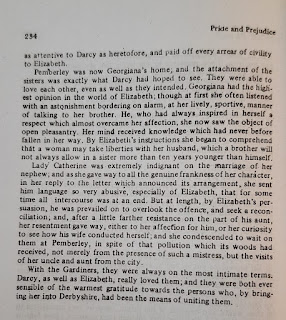Film Screening: “Pride and Prejudice” by Jane Austen
Pride & Prejudice is a 2005 romantic drama film directed by Joe Wright,
in his feature directorial debut, and based on Jane
Austen's 1813 novel of the same name. The film features
five sisters from an English family of landed
gentry as they deal with issues of marriage, morality and
misconceptions. Keira Knightley stars in the lead role
of Elizabeth Bennet, while Matthew
Macfadyen plays her romantic interest Mr. Darcy.
Produced by Working Title Films in association
with StudioCanal, the film was released on 16 September 2005
in the United Kingdom and on 11 November in the United States. (Wikipedia)
Read important aspects: click here
Pre-viewing task:
1) Jane Austen and her interpretations, critique and comment
upon the British landed gentry -
2) Female characters – represent the age – Contradict
the age
3) Society versus Individual
While viewing task:
1) Observe the character of Mrs. Bennet and Mr. Bennet
2) Observe the conflict between Mr. Darcy and
Elizabeth (gestures)
3) Observe Jane and Elizabeth – as different
personalities
4) How Elizabeth constructed prejudice and Darcy
reflected pride
5) Social and cultural norms (Class system and
mannerism)
6) Narrative style of Austen
Post-viewing task:
1) Which version of the story is more appealing? Novel (original) or film (adaptation)? Why?
2) Character of Elizabeth (Headstrong woman, woman
with pride, judgmental, mature, strong-opinions, controlled, honest)
3) Character of Mr. Darcy (Man with pride (male ego),
reserved, introvert, observer, silent lover, superiority complex, true lover)
4) Give illustrations of the society of that time. (Jane Austen's presentation)
5) If you were director or screenplay writer, what
sort of difference would you make in the making of movie?
6) Who would be your choice of actors to play the role of characters? (Elizabeth, Mr. Darcy, Mr. Bingley, Jane, Mr. Collins, Wickham)
7) Write a note on a scene you liked the most. [For this you can record a video (2-5 minutes) and can upload it on your YouTube channel (unlisted or public)]
8) Compare the narrative style of novel and Movie.
Students have to answer all eight questions in their
blog and must comment the link of it.
Novel Ch 1
Novel Ch 61











